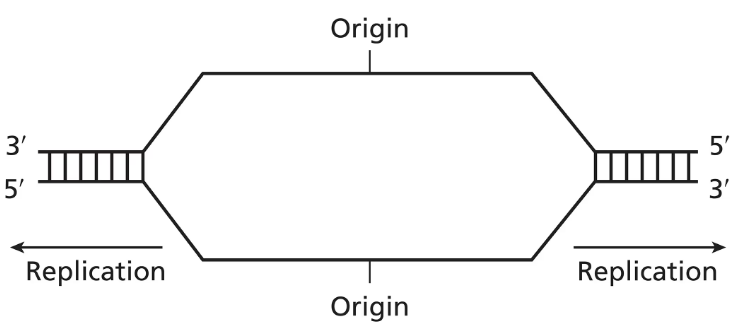DNA replication in early Drosophila embryos occurs about every 5 minutes. The Drosophila genome contains approximately 1.8×10⁸ base pairs. Eukaryotic DNA polymerases synthesize DNA at a rate of approximately 40 nucleotides per second. Approximately how many origins of replication are required for this rate of replication?
Table of contents
- 1. Introduction to Genetics51m
- 2. Mendel's Laws of Inheritance3h 37m
- 3. Extensions to Mendelian Inheritance2h 41m
- 4. Genetic Mapping and Linkage2h 28m
- 5. Genetics of Bacteria and Viruses1h 21m
- 6. Chromosomal Variation1h 48m
- 7. DNA and Chromosome Structure56m
- 8. DNA Replication1h 10m
- 9. Mitosis and Meiosis1h 34m
- 10. Transcription1h 0m
- 11. Translation58m
- 12. Gene Regulation in Prokaryotes1h 19m
- 13. Gene Regulation in Eukaryotes44m
- 14. Genetic Control of Development44m
- 15. Genomes and Genomics1h 50m
- 16. Transposable Elements47m
- 17. Mutation, Repair, and Recombination1h 6m
- 18. Molecular Genetic Tools19m
- 19. Cancer Genetics29m
- 20. Quantitative Genetics1h 26m
- 21. Population Genetics50m
- 22. Evolutionary Genetics29m
8. DNA Replication
Overview of DNA Replication
Problem 37
Textbook Question
The following diagram shows the parental strands of a DNA molecule undergoing replication.

Draw the daughter strands present in the replication bubble, indicating:
a. The polarity of daughter strands
b. The leading and lagging strands
c. Okazaki fragments
d. The locations of RNA primers
 Verified step by step guidance
Verified step by step guidance1
Step 1: Understand the structure of the replication bubble. A replication bubble forms when the DNA double helix is unwound by helicase, creating two replication forks. Each fork has a leading strand (synthesized continuously) and a lagging strand (synthesized discontinuously).
Step 2: Identify the polarity of the parental strands. DNA strands are antiparallel, meaning one strand runs in the 5' to 3' direction while the complementary strand runs in the 3' to 5' direction. Use this information to determine the polarity of the daughter strands being synthesized.
Step 3: Determine the leading and lagging strands. The leading strand is synthesized continuously in the 5' to 3' direction toward the replication fork, while the lagging strand is synthesized in short fragments (Okazaki fragments) in the 5' to 3' direction away from the replication fork.
Step 4: Locate the Okazaki fragments on the lagging strand. These fragments are short stretches of DNA synthesized discontinuously. They are later joined together by DNA ligase to form a continuous strand.
Step 5: Indicate the locations of RNA primers. RNA primers are short sequences synthesized by primase to provide a starting point for DNA polymerase. On the lagging strand, each Okazaki fragment begins with an RNA primer, while the leading strand requires only one primer at the start of synthesis.
 Verified video answer for a similar problem:
Verified video answer for a similar problem:This video solution was recommended by our tutors as helpful for the problem above
Video duration:
2mPlay a video:
Was this helpful?
Key Concepts
Here are the essential concepts you must grasp in order to answer the question correctly.
DNA Replication
DNA replication is the biological process by which a cell duplicates its DNA, resulting in two identical copies. This process occurs during the S phase of the cell cycle and involves unwinding the double helix, synthesizing new strands complementary to the original strands, and ensuring accurate copying through various enzymes.
Recommended video:
Guided course

Steps to DNA Replication
Leading and Lagging Strands
During DNA replication, the leading strand is synthesized continuously in the direction of the replication fork, while the lagging strand is synthesized in short segments called Okazaki fragments, away from the fork. This difference arises because DNA polymerase can only add nucleotides in a 5' to 3' direction, necessitating a more complex synthesis for the lagging strand.
Recommended video:
Guided course

Double Strand Breaks
RNA Primers and Okazaki Fragments
RNA primers are short sequences of RNA that provide a starting point for DNA synthesis, as DNA polymerase cannot initiate synthesis without them. On the lagging strand, multiple RNA primers are laid down to initiate the synthesis of Okazaki fragments, which are later joined together by DNA ligase to form a continuous strand.
Recommended video:
Related Videos
Related Practice
Textbook Question
716
views



